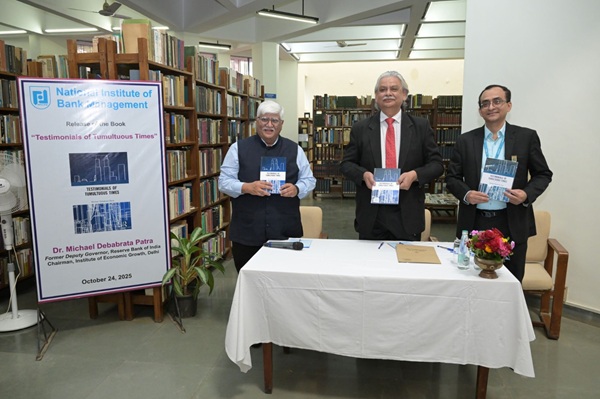.png)

Chandrashekhar is an economist, journalist and policy commentator renowned for his expertise in agriculture, commodity markets and economic policy.
October 27, 2025 at 4:38 AM IST
At a time when India faces a chronic goods trade deficit and rapid rupee depreciation resulting in import-led inflation, gold stands out as a high-performing commodity.
From a recent low of $22 billion in 2020, India’s gold import value has surged. Imports rose 150% to $55.8 billion in 2021, before dipping to $36.6 billion in 2022. A renewed surge followed in 2023, with imports climbing to $42.6 billion and further to $58.1 billion in 2024.
The government identifies 26 countries as the country of consignment for gold imports, with a few others grouped under “others.” It is important to note that this refers to the country of consignment, not origin. Switzerland, the UAE, South Africa, Peru, andAustralia occupy the top five positions by value, followed by the US, Hong Kong, and several nations across Africa and South America.
An analysis of country-wise imports over the past decade makes interesting reading. As per the latest data, Switzerland tops the list with supplies worth $21.5 billion in 2024, up from $16.4 billion the previous year.
The UAE follows. Gold imports from the Gulf nation surged sharply after the signing of the India–UAE Comprehensive Economic Partnership Agreement in May 2022. From $2.9 billion in 2022, imports from the UAE more than doubled to $6.7 billion in 2023 and nearly doubled again to $12.9 billion in 2024.
An expert closely associated with the bullion market said the surge reflects channelisation of what earlier came as smuggled gold into official imports.
Imports from South Africa rose to $5.2 billion in 2024 from $4.3 billion in 2023; from Peru, they nearly doubled to $4.4 billion; and from Australia, they increased to $3.4 billion from $2.1 billion. The US, Hong Kong, Ghana, and several others follow.
Equally interesting is the amount of customs duty collected on gold imports. From ₹122.93 billion in 2022, revenue rose to ₹177.47 billion in 2023 and jumped to ₹264.02 billion in 2024.
Imports from Switzerland accounted for ₹75.23 billion in duty collection in 2024, more than double the ₹35.52 billion collected a year earlier. Revenue from UAE imports tripled from ₹10.63 billion in 2022 to ₹36.27 billion in 2023, and then doubled to ₹74.86 billion in 2024.
Under the India–UAE CEPA, gold imports enjoy a concessional duty rate. The UAE is a trading hub, not a gold producer, making the rationale for this concession, which leads to a revenue loss for India, unclear.
Despite tens of billions of dollars spent annually on gold imports, there is no clear audit trail of funds involved in the trade. Several questions remain unanswered: What are the sources of import financing? How are imported consignments quality-checked and disposed of domestically? Who are the buyers, and what are their funding sources? How are gold exports, whether as ornaments or jewellery, inspected and valued? And is round-tripping prevalent?
Market watchers have long raised concerns about the source of funds in the bullion trade. Suspicions of tainted money have always loomed large. Given the scale and opacity of the trade, the need for transparency is undeniable — particularly in tracing fund origins and ensuring quality verification.
It is imperative that the Union Finance Ministry and theReserve Bank of India put in place a strict, end-to-end regulatory framework for the bullion business.
Data on gold smuggling and seizures over the past decade tell their own story. While both the number of cases and the volume of seizures fluctuate year to year, a pattern is discernible.
In 2015–16, 2,972 kg of gold was seized across 2,815 cases, followed by 1,520 kg from 1,573 cases in 2016–17. Over the next eight years, the ratio remained largely unchanged — roughly one kilogram per case — suggesting most seizures involve returning passengers attempting to sneak in small quantities.
Nevertheless, international agencies promoting gold have often spoken of unauthorised imports into India on a much larger scale, running into tens or even hundreds of tonnes, attributing smuggling to high import duties and indirectly advocating lower tariffs.
Their sources of information remain unclear and merit investigation. Some of these agencies, representing overseas gold export cartels, masquerade as neutral observers while pushing their commercial agendas.
Over the past two decades, with advances in surveillance technology and coastal monitoring, large-scale smuggling has become increasingly risky, if not nearly impossible.




